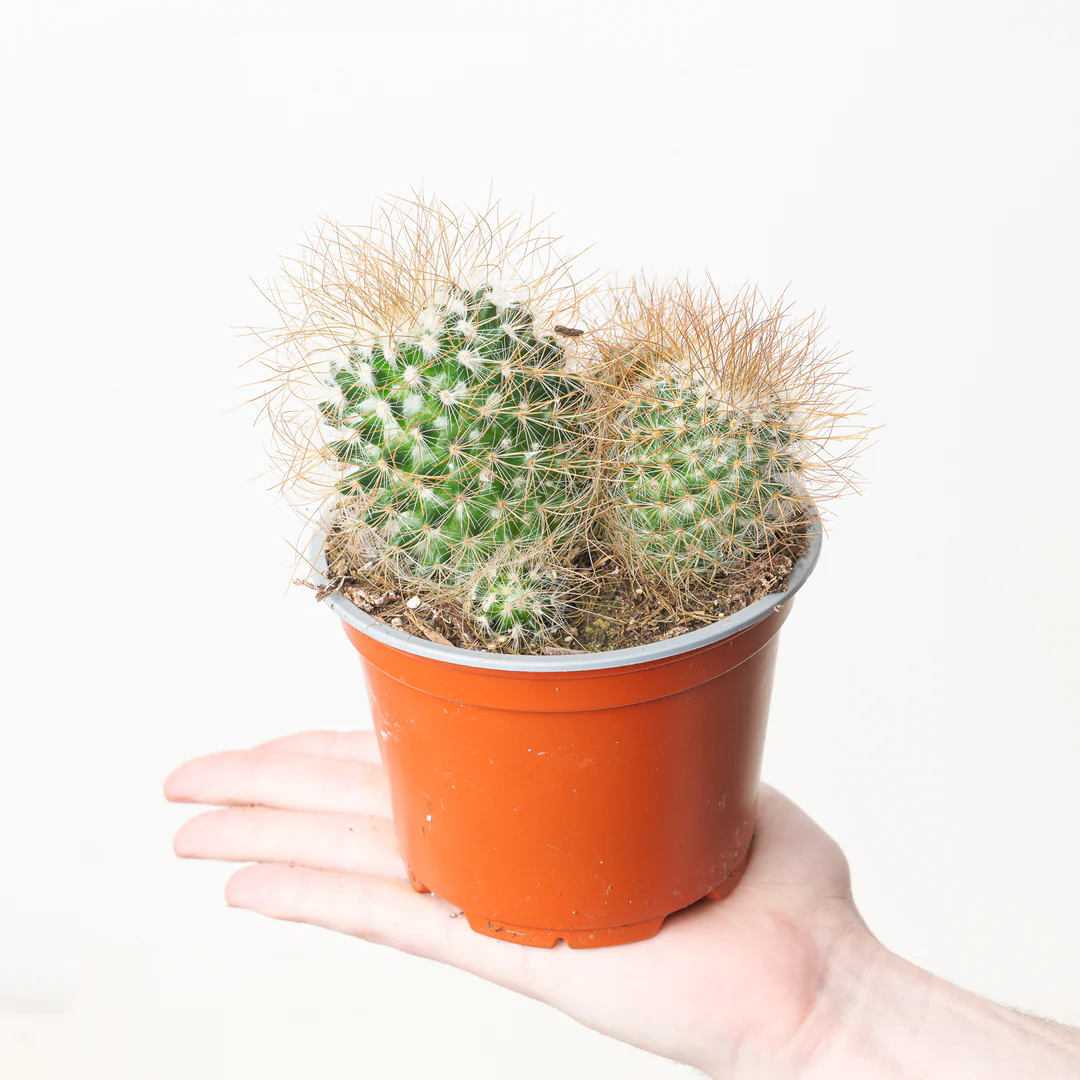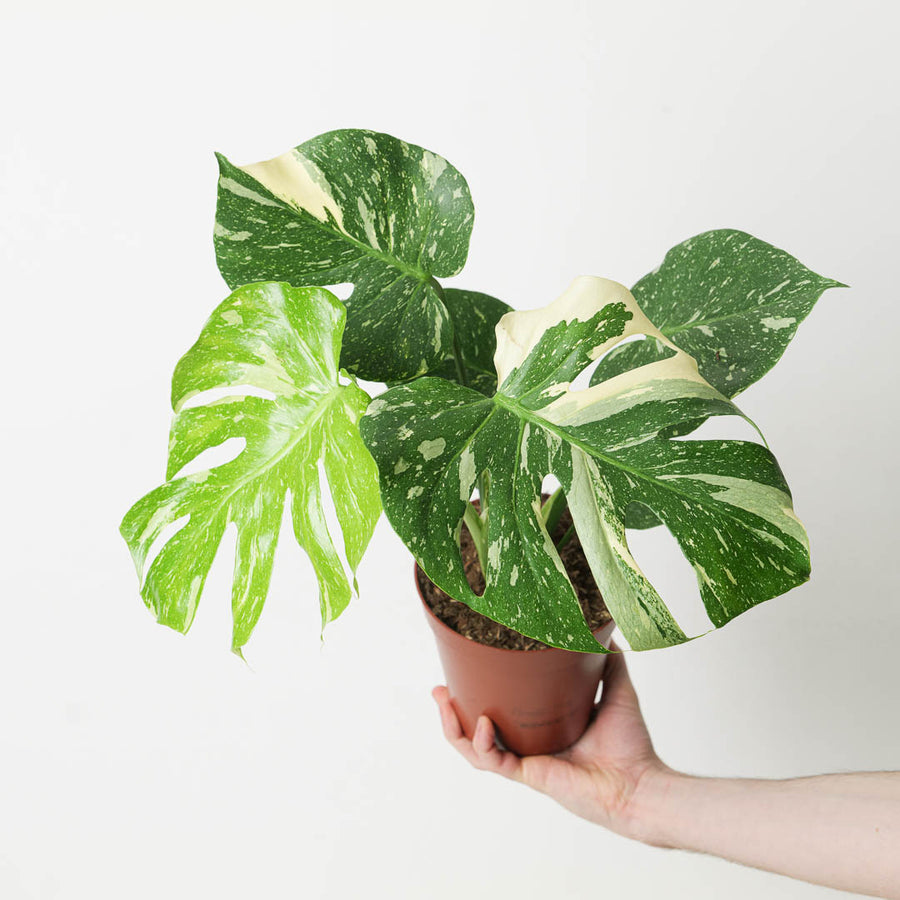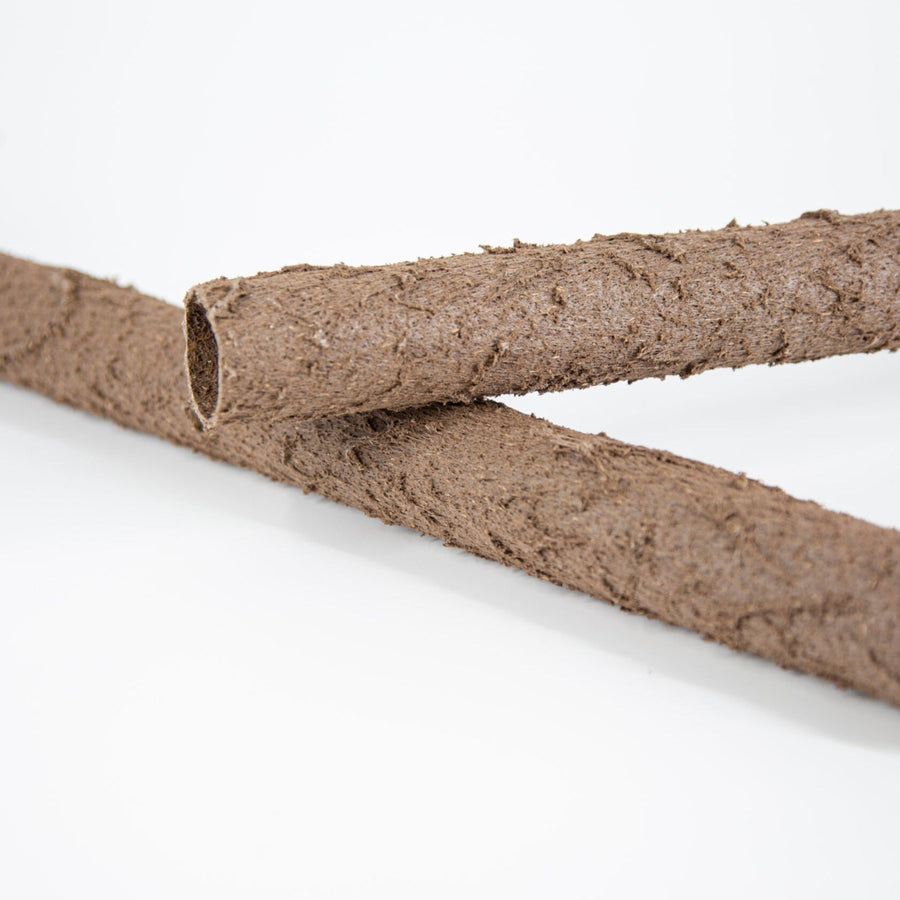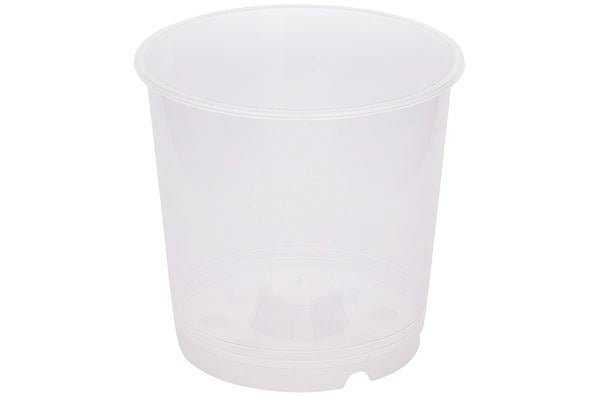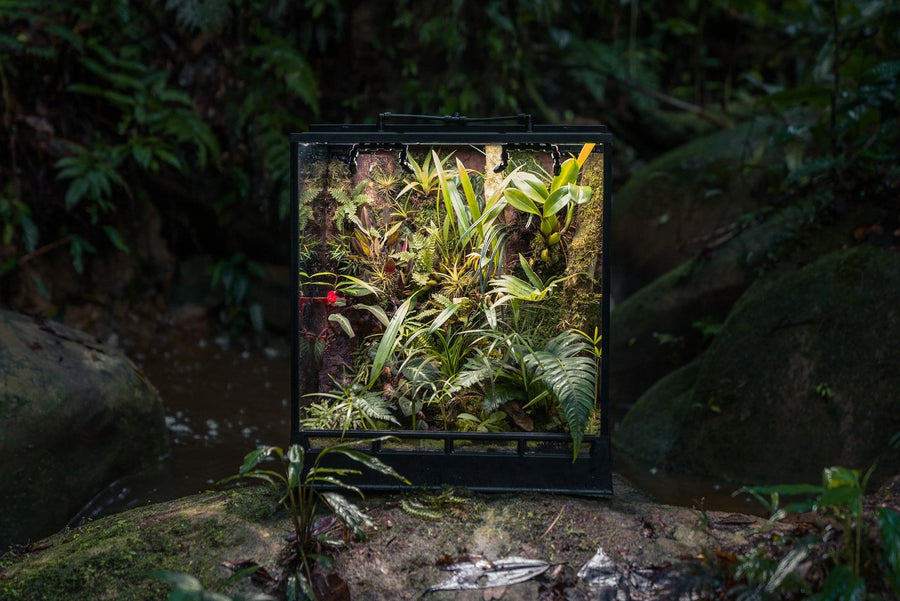Mammillaria leptacantha is a globular cactus species known for its dense arrangement of tubercles and striking spination. Its body is a dark green, with tubercles arranged in spirals, each tipped with clusters of fine white radial spines and a few longer, needle-like central spines that are yellowish-brown or reddish. Over time, this cactus can form small clumps as it produces offsets, creating a charming, clustered appearance. Mature specimens often produce small, pink to purple flowers in a ring around the crown, adding seasonal visual interest.
This species is easy to care for and well-suited to indoor cultivation, particularly for growers seeking a small, low-maintenance cactus with a distinctive appearance. Its compact size and tolerance for dry conditions make it a popular choice for windowsills or small pots.
Native to
Mammillaria leptacantha is native to Mexico, specifically in arid and semi-arid regions such as Puebla and Oaxaca. It naturally grows in rocky soils and open grasslands, thriving in areas with intense sunlight and well-draining substrates.
Water
Water sparingly, allowing the soil to dry out completely between watering. During the growing season (spring and summer), water every 2–3 weeks, adjusting for temperature and light conditions. In autumn and winter, when the plant enters dormancy, reduce watering to once a month or less. Ensure the pot has excellent drainage to avoid waterlogging and root rot.
Light
This cactus thrives in bright, indirect light or a few hours of direct sunlight daily. A south- or west-facing window is ideal. Insufficient light can cause the plant to lose its compact shape or become etiolated.
Humidity
Mammillaria leptacantha prefers low to moderate humidity levels, around 30–50%. It does not require additional humidity and thrives in the dry air typical of most indoor environments in the UK.
Temperature
Maintain a temperature range of 18–26°C during the growing season. The plant can tolerate cooler temperatures down to about 5°C but must be protected from frost and sudden cold draughts. During winter, keep it in a well-lit, frost-free location.
